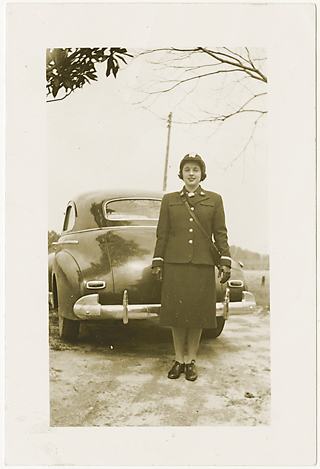World War II introduced new opportunities for women in the military and on the home front, although it was not the first time in history women assisted with war efforts. As far back as the American Revolution, women stepped up as nurses, in supply-support roles, and in isolated cases, women disguised themselves as men to fight. During World War I, female volunteers served as nurses and ambulance drivers at home as well as overseas, and took on military administrative and clerical positions that freed up more men to fight. However, these women were denied the military and veteran’s benefits given to men.

During WWII, women continued this tradition of wartime mobilization, but growing discontentment with the lack of benefits available to women volunteers, as well as a growing need for labor within the military, led to the passing of Public Law 689 in July 1942. This allowed for the creation of women’s reserve units that received military benefits. The purpose of these units was to place women in non-combat roles, freeing up men to fight overseas.
On July 30, 1942, the United States Navy was the first to act on this, establishing WAVES (Women Accepted for Volunteer Emergency Service), an all-female unit. Though women’s service in this unit came with restrictions – the women were not allowed to serve overseas or aboard naval vessels, and Black women were not allowed to serve until 1944 – they did receive military status and benefits equal to men in the Navy (such as pensions and disability protection).
In 1943, Southampton County native Nancy Bailey (later Cogsdale) left her job as a teacher at Norview High School in Norfolk to enlist in WAVES out of a sense of patriotic duty. She later recalled: “There is no way to tell you how I felt when I put on my first uniform and stood up to salute when The Star-Spangled Banner was played.” Stationed in Norfolk, she worked as a coding and communications watch officer, encrypting and deciphering top-secret messages until August 1946. Although many of these women encountered sexism, Bailey described her service as “challenging,” “broadening,” and “one of my most treasured experiences.”
Eventually, their numbers approached 90,000. By the end of WWII, women had shifted from culturally appropriate positions of clerical, administrative, and nursing work to specialized and then traditionally masculine work, such as engineering, mechanics, air traffic control, and even instructing combat techniques. Women also worked in coding and intelligence, requiring top-secret government clearance.
Originally intended to serve temporarily, the contributions of WAVES in the Navy and their sisters in other branches led President Harry Truman to integrate women into the armed forces in 1948. That’s when the Women’s Armed Services Integration Act enabled women to serve as permanent, regular members of the United States Army, Navy, Marine Corps, and Air Force.

Photos: courtesy Virginia Museum of History & Culture




